Key in a search term below to search our website.
Key in a search term below to search our website.
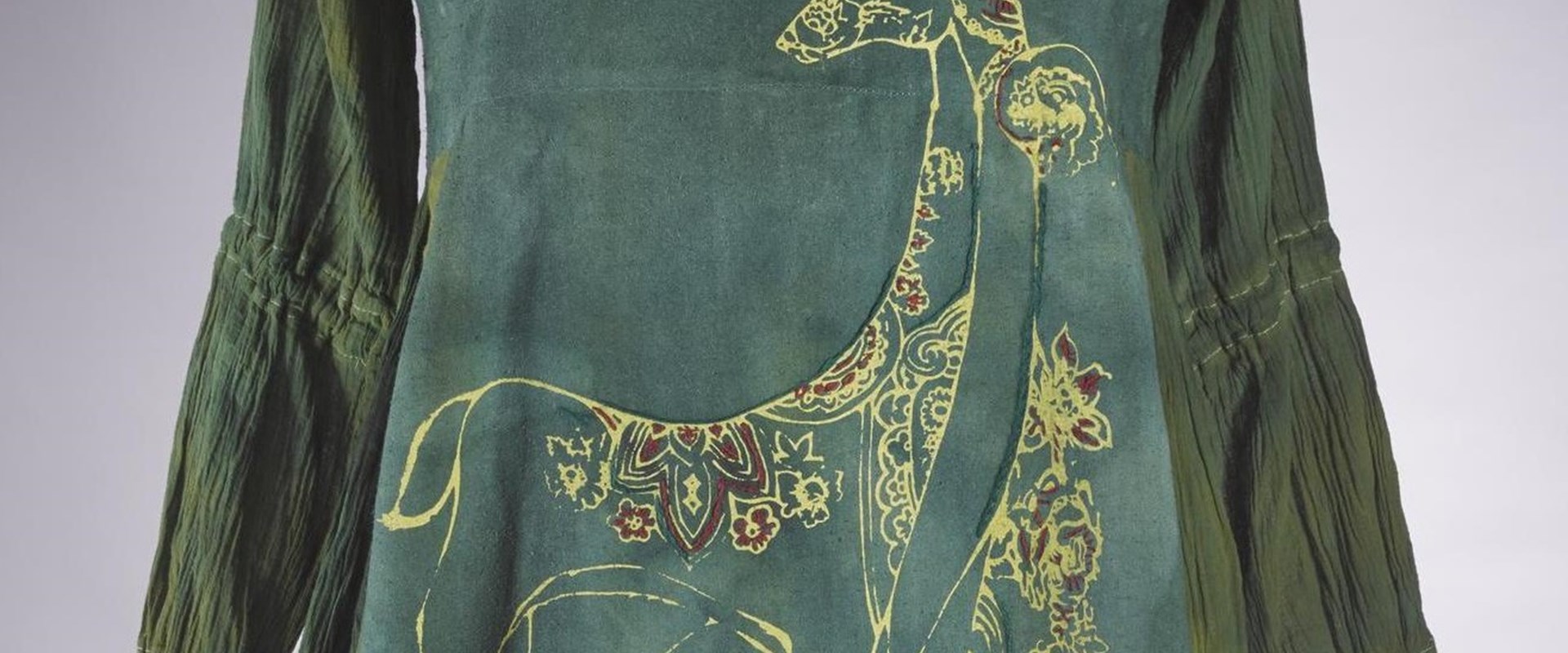
Diba Mehrabi trained as an artist before studying contemporary textile practice. In her work, Mehrabi enthusiastically brings both of her interests together, using fabrics as her canvas so that clothing becomes a moving art gallery for her.
Based in Cardiff, ‘Diba hand-made’ is a brand dedicated to ethical and sustainable clothing, accessories and jewellery. Mehrabi creates timeless fashion using organic and naturally dyed fabrics made from raw silk, wool, cotton and banana leaf. The front and back of the green dress are made from silk, while she used cotton for the side panels and long sleeves. The contrasting red skirt is made from 100% cotton fabric.
Mehrabi paints her dresses individually. A unique feature of this dress is the graceful drawing of a deer, or Persian wild goat. The goat – turning its head back mindfully – is rendered in a few broad yellow brush lines. Bold flowers and scrolled leaves fill the goat’s body and the space around it. They seem to emphasise the ornamental qualities of the drawing, reminding us of rock art and carved architectural reliefs where the wild goat might have featured in the past.
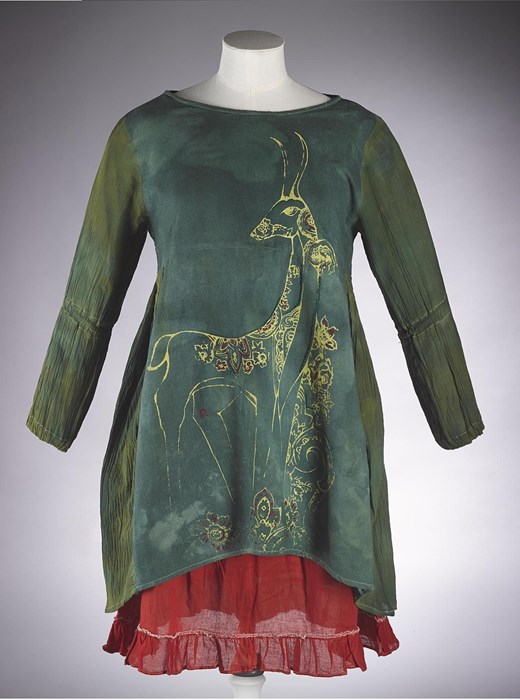
Above: Green dress with red skirt © Diba Mehrabi. Accession number V.2015.12.1-2.
The frequency of deer depictions in the visual culture of pre-historic Iran suggests that the motif had a religious and symbolic significance. The Persian deer, also called ibex, is regarded as the ancestor of the domestic goat. It was hunted and depicted in caves in the region of Luristan from c 38000 BCE. Elegantly stylised deer can also be found on painted pottery such as on beakers from Susa; they feature on Elamite cylinder seals, flanking a tree of life; and in the so-called Luristan bronzes of the Iron Age. Examples of ceramics from the 13th century CE in the collection of National Museums Scotland show stylised deer heads forming the spout of a bottle and rendering an oil lamp.
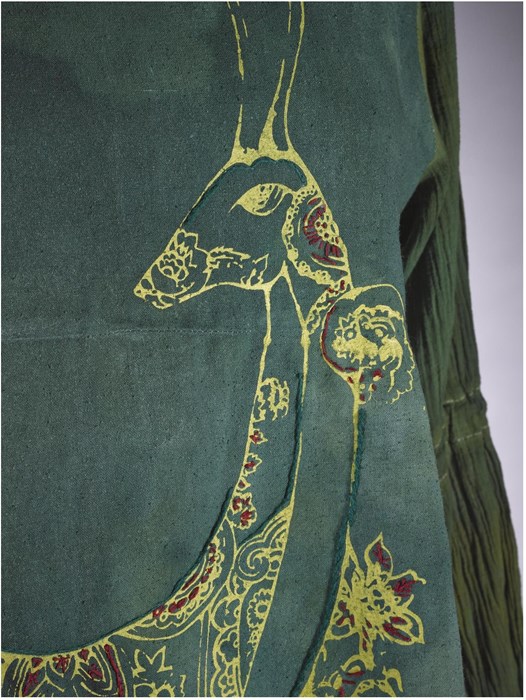
Above: Detail of the deer.
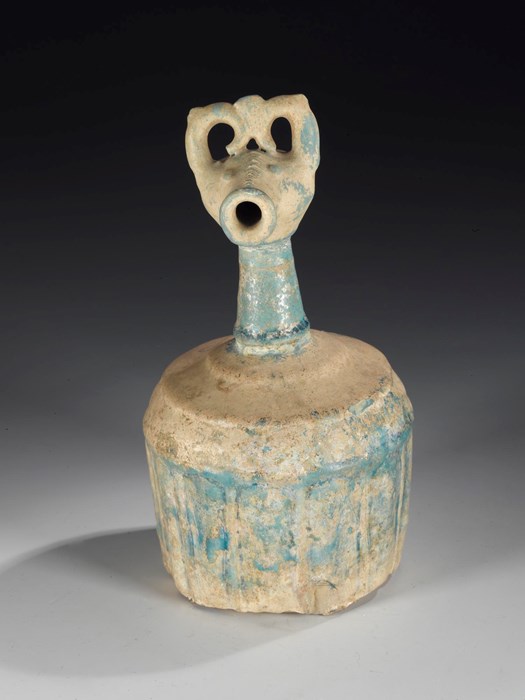
Above: Earthenware bottle, the top in form of a stylised ibex head, Iran, 12th-13th century. Accession number A.1976.330.
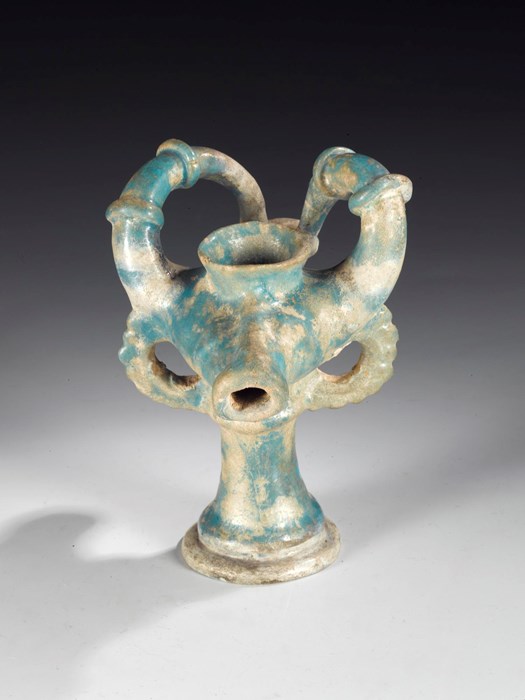
Above: Earthenware lamp in form of a stylised ibex head, Iran, 12th-13th century. Accession number A.1976.335.
“I used the image of a deer in my design because deer have a long history in our culture.- Diba Mehrabi